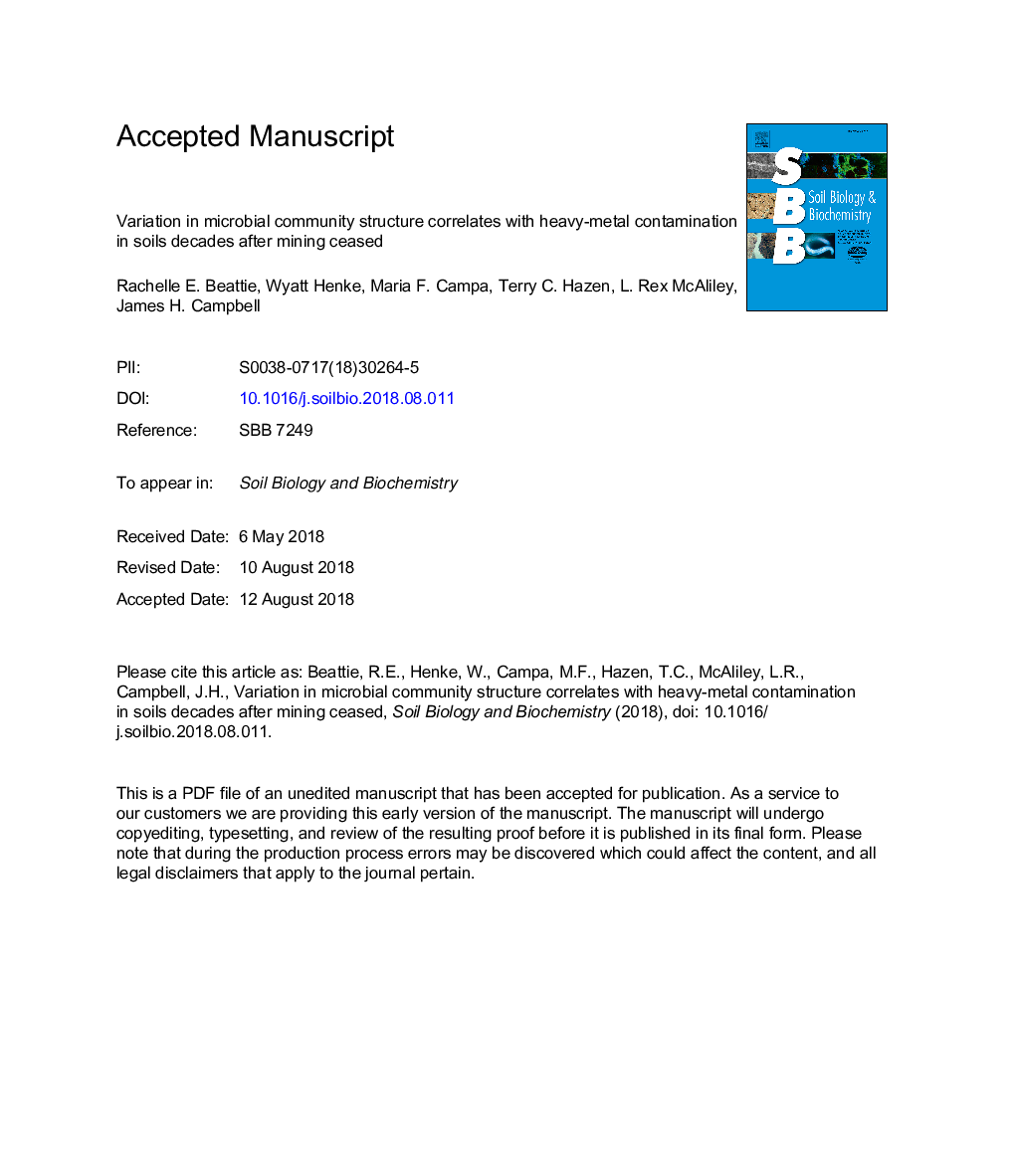| Article ID | Journal | Published Year | Pages | File Type |
|---|---|---|---|---|
| 8362400 | Soil Biology and Biochemistry | 2018 | 35 Pages |
Abstract
Microorganisms play vital roles in Earth's biogeochemical cycles. Identifying disturbances in microbial communities due to anthropogenic contamination can provide insights into the health of ecosystems. Picher, Oklahoma, was the site of large-scale mining operations for Pb, Zn, and other heavy metals until the mid-1950s, operating within the Tri-State Mining District (TSMD) of Missouri, Kansas and Oklahoma. Although mining ceased decades ago, high concentrations of heavy metals (>1000â¯ppm) remain in area soil and water systems. Previously, we mapped metal concentrations on samples collected from mine tailings in Picher and along cardinal-direction transects within an 8.05-km radius of the town. To elucidate changes in microbial community structure due to regional metal contamination, 16S rRNA gene sequences and qPCR calculations of total Bacteria and Archaea were analyzed against these metal concentrations. Bacteria were negatively and significantly correlated with Pb, Cd, Zn, and Mg; however, Archaea was only significantly and positively correlated with pH. Illumina sequencing of 16S rRNA genes showed significant differences in microbial communities of chat and west transect samples. Comparison of soil chemistry with community structure indicated that Al, Pb, Cd, and Zn significantly impacted community composition and distribution of individual OTUs. Mapping the distribution of heavy-metal contamination and microbial communities in these soils represents the first step in understanding effects of long-term, heavy-metal contamination at a basic trophic level.
Related Topics
Life Sciences
Agricultural and Biological Sciences
Soil Science
Authors
Rachelle E. Beattie, Wyatt Henke, Maria F. Campa, Terry C. Hazen, L. Rex McAliley, James H. Campbell,
